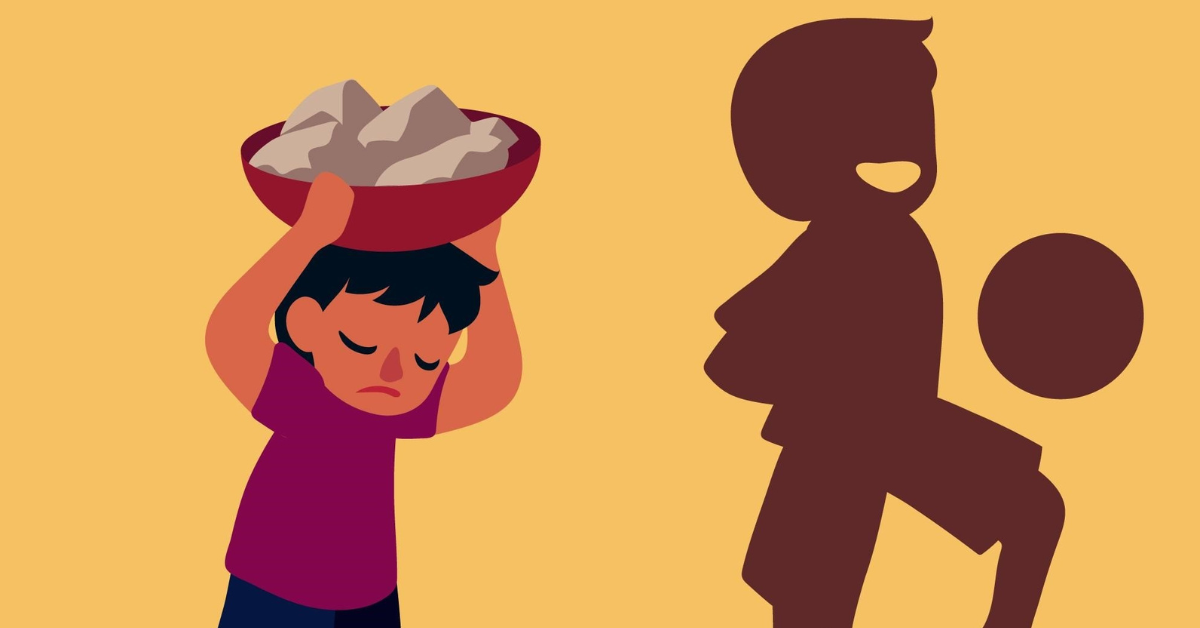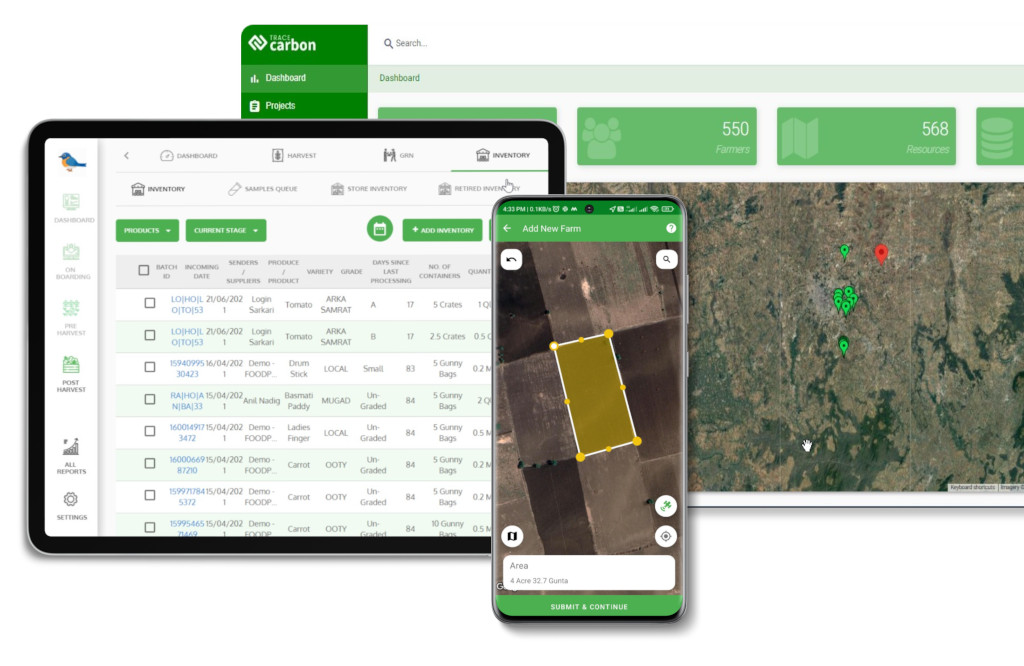Contact: +91 99725 24322 |
Menu
Menu
Quick summary: Learn how CLMRS helps businesses ensure compliance and ethical sourcing by monitoring and addressing child labor risks in supply chains. Strengthen transparency, meet global standards, and drive responsible sourcing.

Imagine walking into a store and picking up a chocolate bar, a cotton t-shirt, or a cup of coffee. Now, imagine if you knew that behind these everyday products, millions of children are forced into hazardous labour, deprived of education and basic rights. Global supply chains—especially in agriculture, textiles, and mining—are at high risk, and brands face mounting pressure to ensure ethical sourcing. With increasing scrutiny from EUDR, CSRD, and CSDDD laws, businesses must implement child labour monitoring and remediation systems (CLMRS) to maintain compliance and brand reputation.
160 million children worldwide are engaged in child labour—almost 1 in 10 children. Many industries, including cocoa, coffee, palm oil, textiles, and mining, have a high risk of child labour in their supply chains.
To truly eliminate child labour, businesses need tech-enabled solutions that integrate traceability, AI-driven risk assessments, and real-time reporting into their supply chains. In the next sections, we’ll explore how CLMRS works, industry best practices, and actionable steps to implement it effectively
Key Takeaways
Let’s be honest—child labour is still a harsh reality in many global supply chains. Whether it’s cocoa farms in West Africa, coffee plantations in Latin America, or textile factories in Asia, thousands of children are working in conditions no child should ever face.
The challenge? Most companies don’t have visibility into where and how child labour exists in their supply chains. This is where a Child Labour Monitoring and Remediation System (CLMRS) comes in.
Think of CLMRS as a structured system designed to detect, prevent, and eliminate child labour in supply chains. It helps businesses go beyond just checking a box for compliance—it ensures real impact by identifying risks and taking action to support affected children.
Identification & Reporting
The first step is understanding where the risks are. This happens through:
✔ Community-Based Monitoring – Training local field agents, farmers, and cooperatives to identify and report cases of child labour.
✔ Geo-Mapping Risk Areas – Using digital tools to track supply chain risks in high-vulnerability regions.
✔ Supplier Due Diligence – Verifying if suppliers follow ethical sourcing policies.
Example: Imagine a cocoa buyer sourcing from smallholder farms in Ghana. With CLMRS, they can map farms, track working conditions, and ensure no children are forced into labour.
Monitoring & Data Collection
Without data, it’s impossible to measure progress. CLMRS helps businesses:
✔ Use mobile apps and digital reporting tools to track risks in real time.
✔ Identify trends—which farms, factories, or suppliers pose the biggest risks?
✔ Create centralized dashboards to keep compliance teams informed.
Example: A fashion retailer implementing CLMRS in their cotton supply chain can track field reports from auditors, flag high-risk suppliers, and create instant action plans.
Intervention & Remediation
Spotting child labour is just the start—the real impact comes from remediation. This includes:
✔ School Support & Scholarships – Ensuring affected children return to education.
✔ Financial Aid for Families – Helping families replace lost income so they don’t have to rely on child labour.
✔ Skill Development Programs – Providing youth with alternative employment opportunities.
Example: A coffee exporter in Colombia using CLMRS connects at-risk children to education programs and offers financial incentives to families that commit to keeping their kids in school.
Ongoing Verification & Compliance
Ethical sourcing isn’t a one-time effort—it requires continuous monitoring. CLMRS ensures:
✔ Regular supplier audits to prevent child labour from re-entering the supply chain.
✔ Blockchain-based tracking for secure, tamper-proof supply chain data.
✔ Real-time dashboards to demonstrate compliance with EUDR, CSRD, and Human Rights Due Diligence laws.
Example: A palm oil company in Indonesia using CLMRS can share real-time compliance reports with EU buyers, proving that their supply chain is child labour-free.

Beyond ethical responsibility, companies that fail to address child labour risk legal trouble, lost contracts, and reputational damage. New regulations demand full traceability—so if your business doesn’t have a system like CLMRS in place, you’re at risk of losing market access.
The good news? Technology makes compliance easier than ever. Digital traceability, AI-driven monitoring, and real-time risk alerts can help businesses build ethical, child-labour-free supply chains.
If you’re in food, agriculture, fashion, or manufacturing, you’ve probably noticed one thing: compliance is no longer optional. Governments across the world are passing strict laws to ensure supply chains are free from deforestation, forced labour, and unethical sourcing.
EUDR (EU Deforestation Regulation) & CSRD (Corporate Sustainability Reporting Directive)
UFLPA (Uyghur Forced Labor Prevention Act)
ILO Conventions 138 & 182
HRDD (Human Rights Due Diligence) Laws – Germany, Netherlands, France
CSDDD (Corporate Sustainability Due Diligence Directive)
Child labour remains a deep-rooted challenge in global supply chains, particularly in agriculture, textiles, and mining. While businesses are committed to ethical sourcing, the reality is that many still struggle to detect and eliminate child labour effectively.
Many companies rely on manual tracking and outdated data to monitor their supply chains. The problem?
Businesses need real-time digital monitoring with geo-mapped farm records and verified worker data to uncover hidden risks.
Many brands trust their suppliers to report labour conditions, but…
Implement independent verification methods using AI-driven risk assessment, third-party audits, and blockchain-backed supply chain tracking.
For small-scale farmers, eliminating child labour isn’t always as simple as hiring adults instead.
Companies should provide incentives, training programs, and financial support to help farmers adopt sustainable labour practices.
When audits rely on disconnected, outdated, or incomplete records, brands face serious risks:
Businesses must move to automated compliance tracking with real-time reporting, digital documentation, and predictive analytics to stay ahead of regulations.
Child labour remains a major challenge in global supply chains, but technology is changing the game. Instead of relying on manual audits and outdated reporting, businesses can now use digital solutions to ensure their supply chains are ethical, transparent, and compliant with global regulations.
Here’s how technology is revolutionizing Child Labour Monitoring & Remediation Systems (CLMRS):
Many companies struggle with trust issues when it comes to verifying supplier claims about ethical labour practices. Traditional paper-based records can be altered, lost, or manipulated. Without secure records, businesses risk working with suppliers who may be hiding child labour violations. Blockchain technology creates a secure, tamper-proof record of worker conditions, wages, and compliance—ensuring that no data is altered or hidden. Brands can confidently prove their due diligence to regulators, investors, and consumers.
Instead of waiting for compliance violations to surface, AI-powered systems can predict risks before they happen. Manual audits only happen occasionally, making it easy for child labour violations to go unnoticed. AI analyzes supply chain data, payment records, and worker demographics to flag unusual patterns—such as wages too low for adult labour or regions with known child labour issues. Businesses can take preventive action instead of reacting to violations after the damage is done.
Companies sourcing from remote farms, factories, and communities often lack real-time visibility into their workforce conditions. Workers at the lowest levels of the supply chain remain invisible, making it hard to identify and remediate child labour cases. Mobile apps and IoT devices allow field officers to report violations instantly, verify worker ages, and track working conditions in real-time. Immediate action can be taken, preventing child labour cases from escalating.
How do companies identify which regions are most at risk of child labour violations? Many businesses lack visibility on the ground and don’t know where child labour risks are highest. Satellite imagery and geo-mapping allow companies to monitor supply chains at scale, identifying hotspots where intervention is needed. Businesses can focus resources on high-risk zones, ensuring that efforts to eliminate child labour are efficient and impactful.

Most companies look at Child Labour Monitoring and Remediation Systems (CLMRS) as just a compliance necessity—but in reality, it’s a powerful business advantage. Investing in ethical supply chains isn’t just about avoiding fines; it’s about building trust, staying competitive, and future-proofing your business.
Here’s why CLMRS is more than just compliance—it’s a strategic growth driver:
Stronger Brand Reputation = More Loyal Customers
Consumers today care deeply about where their products come from. A single exposure of child labour in your supply chain can cause a PR disaster, leading to boycotts and lost revenue. A CLMRS-driven ethical supply chain allows you to prove that your brand stands for responsibility and transparency.
According to research, 94% of consumers are more likely to be loyal to a brand that offers complete supply-chain transparency, while 39% say they’re willing to switch to a more transparent brand.
Governments worldwide are tightening regulations around child labour. Failing to identify and eliminate child labour can result in export bans, heavy fines, and lawsuits. A CLMRS system helps businesses proactively detect risks, remediate issues, and maintain compliance with laws like:
Sustainability isn’t just a moral choice—it’s a profitable one. Buyers and retailers are moving toward certified ethical sourcing, and companies without proof risk losing premium contracts. By implementing CLMRS, businesses can offer verified child-labour-free products, making them more attractive to global buyers and sustainability-focused retailers.
ESG (Environmental, Social, and Governance) and Sustainable Development Goals (SDGs) aren’t just buzzwords—they define investment trends and business reputation. Investors and stakeholders now demand strict ESG compliance. Companies without a sustainability strategy risk losing funding and market credibility.
A robust CLMRS system ensures supply chains align with:
✔ SDG 8 – Decent Work & Economic Growth (Eradicating child labour)
✔ SDG 12 – Responsible Consumption & Production
✔ SDG 16 – Peace, Justice & Strong Institutions (Ethical governance)
Ensuring ethical sourcing isn’t just about ticking a compliance box—it’s about building a responsible, transparent, and future-proof supply chain. With increasing global regulations like EUDR, CSRD, and HRDD, businesses must prove that their products are sourced ethically, free from deforestation, and without forced or child labour.
Traditional audits rely on paper trails and verbal confirmations, making it easy for unethical practices to slip through the cracks. If you can’t provide tamper-proof proof of ethical sourcing, major retailers and regulators may reject your shipments. With TraceX: Every transaction and sourcing detail is stored on a blockchain, creating an immutable, verifiable record of ethical labour practices. No more gaps in traceability. No more greenwashing. Just clear, verified sourcing data that you (and your buyers) can trust.
How do you verify on-the-ground conditions without sending auditors everywhere? Many child labour and deforestation cases go unnoticed because businesses lack real-time visibility. With TraceX: We integrate geo-mapping and satellite imagery to detect child labour hotspots, monitor deforestation risks, and provide clear location-based compliance tracking. Businesses can ensure every farm, plantation, or supplier is operating ethically, backed by hard data, not assumptions.
Staying compliant with evolving global regulations is a time-consuming nightmare without the right tools. Missing documentation, manual tracking, and last-minute data collection can lead to failed audits, shipment rejections, and financial penalties. With TraceX: Our platform automates compliance reporting, generating audit-ready documentation that aligns with EUDR, CSRD, HRDD, and other global laws. Stay audit-ready, eliminate paperwork, and ensure smooth regulatory compliance without the stress.
Implementing a Child Labour Monitoring and Remediation System (CLMRS) is key to ensuring compliance, ethical sourcing, and supply chain accountability. By leveraging traceability tools, proactive monitoring, and stakeholder collaboration, businesses can eliminate child labor risks, meet global regulatory standards, and strengthen consumer trust. A transparent, ethical supply chain is not just a requirement—it’s a responsibility.
Child labour is prevalent in agriculture, textiles, and mining, affecting 160M children worldwide. Businesses are legally & ethically responsible for ensuring clean supply chains.
Cocoa, coffee, textiles, palm oil, fisheries, and mining face the most scrutiny due to high child labour risks.
AI, blockchain, and geo-mapping improve risk detection, supplier verification, and compliance reporting.
